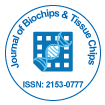Editorial Open Access
Dental Cell Biology, Biochips and Open Access
| Oliver Felthaus, Martin Gosau and Christian Morsczeck* | |
| Department of Cranio- and Maxillofacial Surgery, University Hospital Regensburg, Regensburg, Germany | |
| Corresponding Author : | Dr. Christian Morszeck Department of Cranio- and Maxillofacial Surgery University Hospital Regensburg Regensburg, Germany E-mail: Christian.Morsczeck@klinik.uni-regensburg.de |
| Received December 20, 2010; Accepted December 21, 2011; Published December 23, 2011 | |
| Citation: Felthaus O, Gosau M, Morsczeck C (2011) Dental Cell Biology, Biochips and Open Access. J Biochip Tissue chip 1:e105. doi: 10.4172/2157-0777.1000e105 | |
| Copyright: © 2011 Felthaus O. This is an open-access article distributed under the terms of the Creative Commons Attribution License, which permits unrestricted use, distribution, and reproduction in any medium, provided the original author and source are credited. | |
Visit for more related articles at Journal of Bioengineering and Bioelectronics
Abstract
Dental cell biology investigates the development and regeneration of dental tissues and biochips are therefore important tools in an advanced molecular research. Here, transcriptomics and proteomics are used for the evaluation of genome wide gene expression profiles of cultivated dental (stem) cells after various treatments or for a comparison of different dental stem cell types or developmental stages of dental tissues. At the beginning of a new project, biochips can be very useful and the most important empirical tool to get first hints for ad hoc hypotheses or to set up new hypotheses for experiments in the lab. On the other hand, however, it is very unlikely that biochip data answer directly a specific question; the data received from biochips require careful analyses by cell biologists to estimate their biological importance. For example after a specific treatment of dental stem cells someone obtain all expressed genes at a given time point without an analysis of the meaning for the biology of the cell. To get for example interesting candidate genes for being key regulators in the process of interest a lot of theoretical work with and without bioinformatics programs is required and after that, the lab work begins to prove the biological significance of these genes. One example makes this obvious: In a study of the dental follicle cell proteome, we found that the transcription factors TP53 and SP1 have promoter binding sites for 35% of all regulated during the osteogenic differentiation [1]. In a microarray study, we found that ZBTB16 is an up-regulated transcription factor during osteogenic differentiation [2]. We postulate that these transcription factors are involved in the process of differentiation. Although we could produce these new hypotheses only by the use of biochips and bioinformatics, new experiments were required to prove their biological significance. In the lab we showed that TP53 and ZBTB16, but not SP1 play roles in the molecular process of osteogenic differentiation in dental stem cells.
| Dental cell biology investigates the development and regeneration of dental tissues and biochips are therefore important tools in an advanced molecular research. Here, transcriptomics and proteomics are used for the evaluation of genome wide gene expression profiles of cultivated dental (stem) cells after various treatments or for a comparison of different dental stem cell types or developmental stages of dental tissues. |
| At the beginning of a new project, biochips can be very useful and the most important empirical tool to get first hints for ad hoc hypotheses or to set up new hypotheses for experiments in the lab. On the other hand, however, it is very unlikely that biochip data answer directly a specific question; the data received from biochips require careful analyses by cell biologists to estimate their biological importance. For example after a specific treatment of dental stem cells someone obtain all expressed genes at a given time point without an analysis of the meaning for the biology of the cell. To get for example interesting candidate genes for being key regulators in the process of interest a lot of theoretical work with and without bioinformatics programs is required and after that, the lab work begins to prove the biological significance of these genes. One example makes this obvious: In a study of the dental follicle cell proteome, we found that the transcription factors TP53 and SP1 have promoter binding sites for 35% of all regulated during the osteogenic differentiation [1]. In a microarray study, we found that ZBTB16 is an up-regulated transcription factor during osteogenic differentiation [2]. We postulate that these transcription factors are involved in the process of differentiation. Although we could produce these new hypotheses only by the use of biochips and bioinformatics, new experiments were required to prove their biological significance. In the lab we showed that TP53 and ZBTB16, but not SP1 play roles in the molecular process of osteogenic differentiation in dental stem cells [3]. |
| It is important to publish biochip studies understandable and in their biological context. Although microarray data can be published in an open access database, only journal articles present not only biochip data but also discuss new data in the context of actual research. However, it will be also important that these articles are easy accessible. Open access journals are an interesting media for the publication of evaluated biochips data. Researchers from all over the world are able to access these findings and can easily compare them with previous studies. It offers the possibility for all people to participate in scientific progress. Authors of biochip studies should always consider this advantage of open access journals. We hope therefore that new open access journals such as the Journal of Biochips & Tissue Chips will find their interested audience and we are looking forward for exciting papers and discussions in the future. |
| References |
|
Relevant Topics
Recommended Journals
Article Tools
Article Usage
- Total views: 14707
- [From(publication date):
December-2011 - Dec 11, 2025] - Breakdown by view type
- HTML page views : 10010
- PDF downloads : 4697
